Insights from OutSpoken Voices’ most rebooked voice artists of 2025 and what their success reveals a...
The History of Voice Over: From the Gramophone to Voice Acting Fame
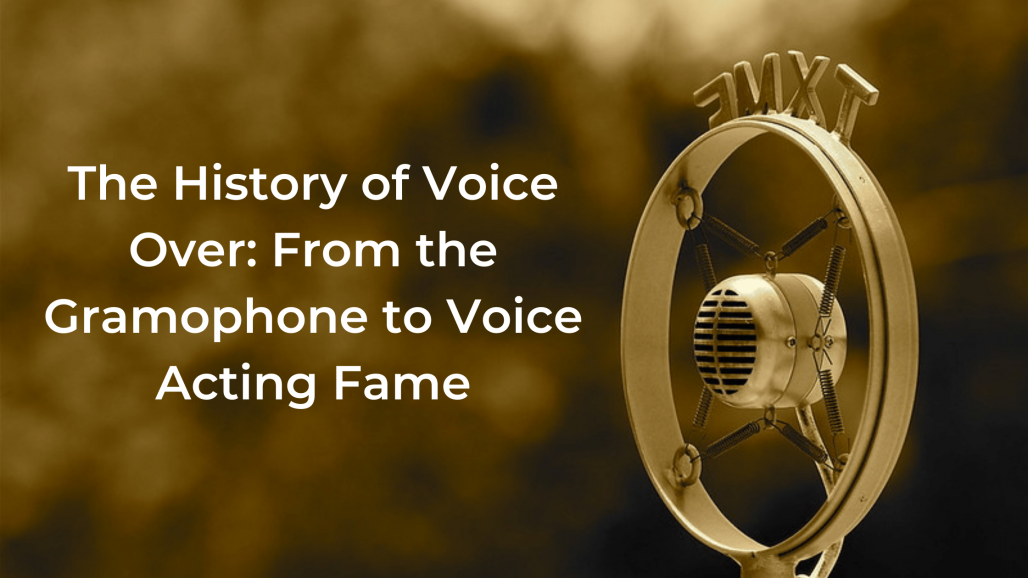
The First Voice Over
The year is 1906, and it's Christmas Eve. From a makeshift studio in Brant Rock, Boston, Reginald Fessenden plays carols for ships at sea. He is using an alternator transmitter, a device able to send quality audio signals - albeit weak ones. After O Holy Night he adds a short speech, a biblical passage from Luke. Fessenden later claimed that his words had reached as far down as Virginia and possibly even the West Indies. There is no evidence of this broadcast, but we know that Fessenden did have the technical means to perform it. To some degree, at least, as the transmitter had an estimated range of just 11 miles!
Many consider Reginald Fessenden as radio's first-ever voice. It's worth noting, however, that others had attempted similar feats before, too. For example, in the 1860s, a Parisian librarian called Edouard-Leon Scott de Martinville recorded a woman singing "Au Clair de la Lune" on a phonautograph, the earliest known device for recording sound. Thomas Alva Edison also made a sang recording of "Mary had a Little Lamb" in 1877, and in 1893 Henri Lioret (a watchmaker) caused a sensation with a talking toy powered by a phonograph in its chest. The mechanical doll was given as a gift to the daughters of the Russian tsar - although it was way too complex and sensitive to be used as a children’s toy.
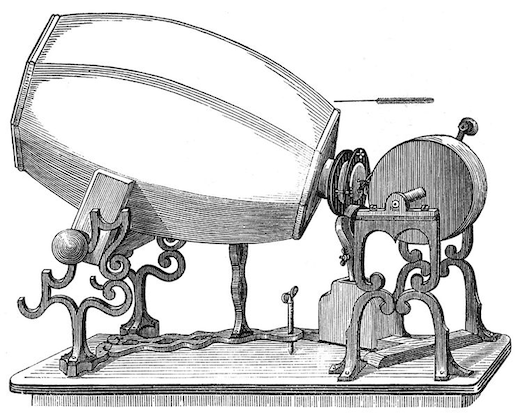
(Image source) An early phonautograph (1859). The barrel is made of plaster of paris. Image courtesy of Wikimedia Commons.
Voice-over as we know it, however, is believed y many to begin in 1928 - with Disney's 1928 "Steamboat Willie" animation. This was the first time characters came to life with a synchronized voice. Walt Disney himself did the voice for Mickey, a task in which he took especially pride. He remained the official voice for the character until 1946 and continued to do occasional voice-overs for him until his passing in 1966.
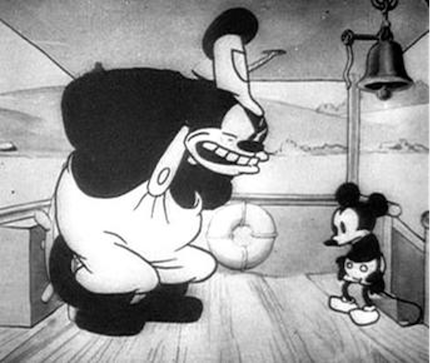
(Image source) Pete (left) confronts Mickey (right) on the bridge of the steamboat. Image courtesy of Wikimedia Commons.
Walt Disney and The Golden Age of Voice
When Warner Bros. and Leon Schlesinger premiered Looney Toons in the 1930s, they introduced the person to become the voice of countless famous cartoon characters. A former radio personality and outstanding voice actor, Mel Blanc was soon nicknamed "the man of a thousand voices". He's the talent behind Bugs Bunny, Porky Pie, Woody Woodpecker, and Tweety Pie, among many others. Mel Blanc is regarded as one of the most influential people in the voice-acting industry. At a time when voice actors rarely received screen credits, Blanc had them stipulated by contract.
The years that followed saw an immense influx of cartoons and animations. By the 1960s, the demand for talented voices had drawn professionals into doing work for characters, trailers, and adverts. The market had changed forever.
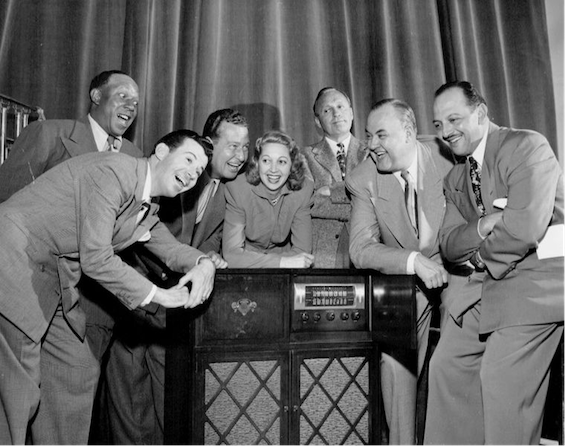
(Image source) The cast of The Jack Benny Program, from left to right: Eddie "Rochester" Anderson, Dennis Day, Phil Harris, Mary Livingstone, Jack Benny, Don Wilson, and Mel Blanc. Image courtesy of Wikimedia Commons.
Among the most famous voices was Donald Leroy (“Don”) Lafontaine, who recorded thousands of commercials, promos, and film trailers. His famous “In a world...” opening phrase was so widely known it’d become somewhat of a cliché. Lafontaine was also a newscaster on WCBS-TV New York and a recurring guest narrator for clues on Jeopardy!. He’s considered the voice of an entire generation of moviegoers and a milestone in voice over history - setting gold standards for those to come.
Voice Over Today: Animated Movies and Videos Games
Voice-over is used today in video games, for announcements, and in radio and television production. With the onset of digitally animated films, the public also grew accustomed to seeing big actor names. Robin Williams’ Aladdin’s comedic genie (jinnī) interpretation was so memorable, it’s considered by many the beginning of the transition to celebrity voice actors. Many A-Listers are undoubtedly happy this is the case; they don’t have to go through hair and makeup or go through exhausting physical routines.
Video games didn’t always have a voice - up until relatively recently, the hardware didn’t even support it. With the adoption of PC CD-ROM drives, games could finally achieve better storytelling through voice acting. Previously silent, they suddenly exploded into a flurry of performances. Nintendo’s most beloved character, the Italian plumber Mario, is voiced by Charles Martinet - who consistently attracts convention-goers that want to hear him saying his most famous line: “It’s me, Mario!”. Today, most games have voice acting and figures like Jennifer Hale, Nolan North and Troy Baker are incredibly prolific and admired.
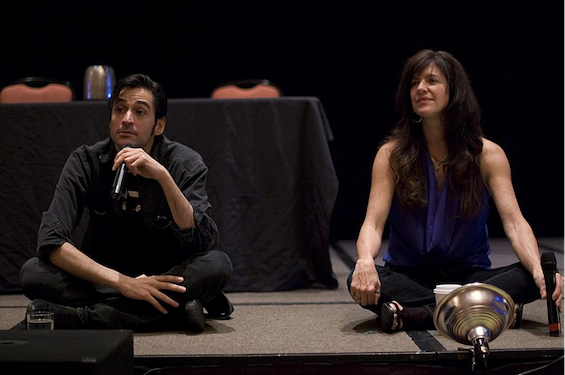
(Image source) Jennifer Hale and fellow Mass Effect Commander Shepard voice actor Mark Meer at EXP Con in St. Augustine, FL - October 21, 2011. Image courtesy of Wikimedia Commons.
Once a more “behind-the-scenes” job, voice actors today are regarded in much higher esteem. Many young people now see voice over as a rewarding career choice and recognized performance art in its own right. In a changing world where flexible schemes are the norm, voice over is also an attractive choice; marketplaces like OutSpoken Voices can bring work remotely and directly to your inbox. And to think that it all began with a man playing Christmas carols to sailors!
Newsletter
Stay up to date with news and special offers. Get to know our new actors and features
NEED HELP?
Visit Frequently Asked Questions page or send us a question.











.png)






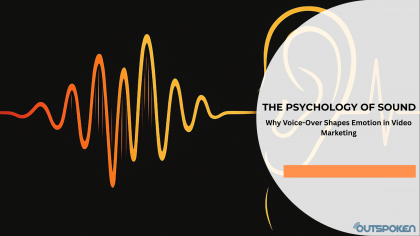




DPN Talent
Thanks for Sharing, its really helpful.
Comment